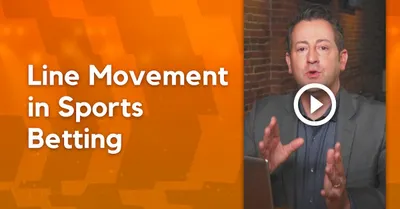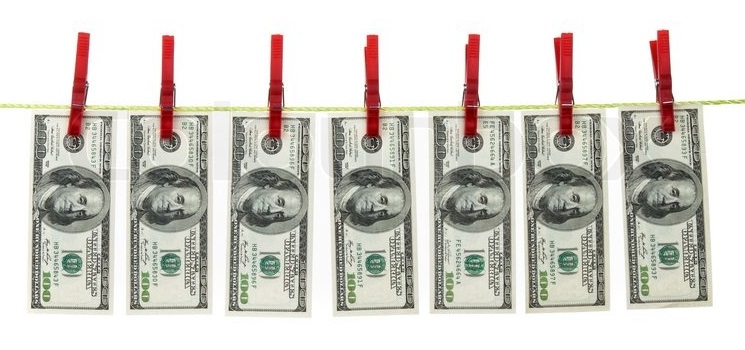Money Line Definition Gambling

Consensus - Percentage of the betting public on each side of a game. Some bettors will bet against the 'public money' (whichever team more bettors have placed their bets on). Cover - The betting outcome on a point spread bet. For a favorite to cover, it must win by a number higher than the spread. What is line betting? Line betting is a form of sports betting whereby the bookmaker handicaps a team by setting a margin, which effectively makes the game equal. This margin is referred to as the line, hence where the term line betting originates. Line Betting is only available for events where there are two possible outcomes.
The point spread is such a ubiquitous part of sports gambling that it has become fodder for pundits and fans who would never place a wager. “Notre Dame is giving up 6 points to USC,” someone might say. “I didn’t know that USC was looking that good this year.”
Instead of judging whether they think the numbers are correct or misguided, people are more likely to simply accept what Vegas has to say. The spread becomes just another prediction.
Baseball wagering is unique in that there is no traditional point spread set for a ballgame. Instead, sportsbooks focus on run totals, the run line, and, most commonly, the money line (ML).
When you wager on the ML, you are picking who you think will win the contest outright. It doesn’t matter how many runs a team scores or how many runs they win by, they just need to score more than their opponent.
This, of course, comes with a catch. A sportsbook is not going to give the same odds to win between a division-leading team with their best starter on the mound and a team at the bottom of the division throwing a bottom-of-the-rotation pitcher.
How to Read MLB Baseball Money Lines – Basic Explanation & Definition
What oddsmakers do in lieu of the point spread is to weigh the moneyline with heavier odds on the favorite. This is an example of what the numbers on a typical ballgame might look like:
- Texas Rangers (-150)
- Oakland A’s (+130)
The Rangers are projected to prevail. The favorite in the match-up will always be the negative (-) number, while the underdog is always positive (+), just like the numbers work with point spreads.
The easiest way to factor the risk vs reward is in terms of $100. In the example above, the (-150) means that you’d need to risk $150 to win $100 on the Texas Rangers. This means if the Rangers prevail, you will be paid $100 (plus your initial $150 investment), however, if the Rangers lose, you lose $150. You must increase the amount you risk on Texas because they are handicapped as the team most likely to take the game.
As for the A’s, at (+130), that number tells you that you can risk $100 to win $130 on them. A winning wager on Oakland gives you $130 (plus you’ll get back the $100 you bet), while a losing bet on the A’s would only cost you $100.
Learn About Baseball Line Prices: Dime Line vs 20 Cent Line

In the example above, and at most sportsbooks, you’ll have what is called a 20 cent line. All that this means is that the absolute value of the favorite price is 20 cents more than the underdog price (150 – 130 = 20). With reduced juice or dime line odds, you’ll get a 10 cent difference. On the very same game, a dime line book like 5Dimes would set the prices at -140 and +130 (140 – 130 = 10). This definitely gives you an edge simply because it takes away some of the built-in vig the book uses to calculate their odds. More on this to come.
Calculating Probability
When it comes to the money line can help to think in terms of probability. In other words, how likely is it that one team will beat the other? This is the foundation of baseball betting and is important to understand before really understanding the money line.
Convert Money Lines to Percentage
There are two formulas you will need to convert baseball betting lines into probability. The formula you use depends on whether the line is positive or negative.
Positive
Example: Money Line = +130
Negative
Example: Money Line = -150
Understanding Vig/Bookmaker Margin: Calculating the No-Vig Line
The astute bettor will notice right away that the probability on each side of an MLB game does not add up to 100%. This is because there is a built-in vig or edge for the bookmaker that helps them make their money. To get the true probability for each side of a game, you need to remove that edge.

Start by adding the two probabilities together. In our example, we had 43.5% + 60% = 103.5%; 103.5%. From the 103.5%, the 3.5% is the estimated vig on this pair of odds (some books do adjust differently on favorites versus underdogs, but we do not need to go into that in detail at this point). We can then take each percentage and divide it by the combined percentage to give us the true probability for each team.
In this matchup, the line tells you that in a fair (no vig) market the underdog has a 42% chance of winning and the favorite has a 58% of winning. This is relevant because as you start to make predictions, you will come up with your own probabilities for a matchup and compare them to the available odds to see whether or not your prediction has value based on these fair market odds.
How to Calculate MLB Baseball Moneylines for Betting Risk & Reward
If you aren’t betting exactly $100 per game, it’s easy to calculate your risk/reward by converting MLs to decimals and multiplying those numbers by your wager amount. A couple of examples:
- If the ML is (-134) and you want to wager enough to collect $35 on that team, you must convert the ML to -1.34 and multiply by $35, which equals $46.90; the amount that is needed to risk on a favorite of -(134) to win $35.
- If you’re looking to bet an underdog of (+172) and have $47 available for a wager, then calculate 1.72 x $47 = $80.25, which is the amount you could collect on a (+172) underdog with a $47 bet.
Using Major League Baseball Odds to Your Advantage
The great part about the ML is that when you bet on underdogs, you can decrease the percentage of games you need to pick correctly to show a profit. For example, if you wager on 100 games with an average line of (-130), you would need to score on 58% (58 of 100) of your bets just to turn a profit, betting $100 per game. You should be paid out $5,800, but lose $5,460 on these bets, giving you a total profit of $340.
Now, looking at a situation where you bet on mostly small underdogs, say an average line of (+115) over 100 bets, you would only need accuracy on about 47% of your picks (47 of 100) to show a profit. You should receive $5,405 in this case while losing $5,300, a profit of $105. Say you can up your winning percentage to 50% at an average money line of (+115). If you are able to do that, you should instead collect $5,750, while losing $5,000, a profit of $750.
Remember that pitching is still the ultimate factor in making your picks and predictions. But a club that recently won a low-scoring outing as a ‘dog is dangerous and almost never a bad wager. Once a team has proven it can small-ball grind its way to upsets of more talented clubs, they carry more value than a squad that got lucky with 5 homers against the Yankees.
Underdog Betting Equals Value In MLB Wagers
As you can see, winning bets on underdogs can add up quickly. Sportsbooks are, of course, well aware of this, but because most people lean toward favorites and not underdogs, they don’t really care. Like a grocery store putting its sweet snacks at toddler-eye level, the books know that some people are wise to their strategy – but enough of a % of shoppers won’t be. Don’t be taken advantage of. Take advantage!
There are few sure-fire handicapping systems that lead to sustained profit in any sport. NFL wagering, for instance, can be a supreme challenge due to its volatility and the sheer amount of action leveling out the lines. The NBA can be a bear due to “garbage time” and other factors that affect the Over/Under.
Money Line Gambling Meaning


Not to say that a cash player can’t make money over time wagering on those sports, but when you find a system that is proven to work in a sport where lines can’t be adjusted too much (due to being set in the morning and paid off by night), then it’s never a bad idea to learn those tactics – even if you don’t always adhere to them.
The numbers above show that if managing to choose your picks on the diamond wisely and take as many high-value underdogs as you can, you will be well on your way to a profitable summer.
Astros -120
In this example the Astros are favored by -120 and the Dodgers are the underdog +110. When wagering on the favorite (Astros), you have to lay $120 for every $100 you want to win. And, when wagering on the underdog (Dodgers), for every $100 wagered you would win $110. Notice that on a negative money line you must lay more to win less and on a positive money line you lay less to win more.
The money line used in this example is called a 'dime line', termed so because of the 10-cent difference between the favorite and the underdog.
Money lines are used most often in Baseball season. The typical Baseball format includes both a money line for the side and a money line for the total. If you wish to wager on the Over, you have to lay $120 for every $100 you want to win. If you wish to wager on the Under, it is an even money wager (EV) and for every $100 you lay, you win $100.
Mets -240 7 -120
Astros +220 EV
The line in the above example would read: 'Mets favorite minus two-forty, total seven, over minus one-twenty.'
On the side:
For every $240 you wager on the Mets (favorite), you will win $100.
For every $100 you wager on the Astros (underdog), you will win $220.
On the total:
For every $120 you wager on the Over, you will win $100.
For every $100 you wager on the Under, you will win $100.
get it?
Moneyline Definition Gambling
used by latin moms to beat their child's ass
Latin child: OH SHIT NOT LA CHANCLA
Mar 9 trending
- 1. Watermelon Sugar
- 2. Ghetto Spread
- 3. Girls who eat carrots
- 4. sorority squat
- 5. Durk
- 6. Momala
- 7. knocking
- 8. Dog shot
- 9. sputnik
- 10. guvy
- 11. knockin'
- 12. nuke the fridge
- 13. obnoxion
- 14. Eee-o eleven
- 15. edward 40 hands
- 16. heels up
- 17. columbus
- 18. ain't got
- 19. UrbDic
- 20. yak shaving
- 21. Rush B Cyka Blyat
- 22. Pimp Nails
- 23. Backpedaling
- 24. Anol
- 25. got that
- 26. by the way
- 27. Wetter than an otter's pocket
- 28. soy face
- 29. TSIF
- 30. georgia rose